The ghostly silhouette of an owl perched on a bare branch, head swiveling with uncanny flexibility, is one of nature’s most remarkable sights. While humans can only rotate their heads about 90 degrees in either direction, owls demonstrate an extraordinary range of motion that has fascinated scientists and nature enthusiasts for centuries. The ability of certain owl species to rotate their heads up to 270 degrees isn’t just an impressive party trick—it’s a sophisticated evolutionary adaptation that compensates for specific anatomical limitations and enhances their hunting prowess. This remarkable capability, most notably observed in species like the Great Horned Owl and Barred Owl, represents one of nature’s most ingenious solutions to the challenges of nocturnal predation.
The Evolutionary Advantage of Extreme Head Rotation
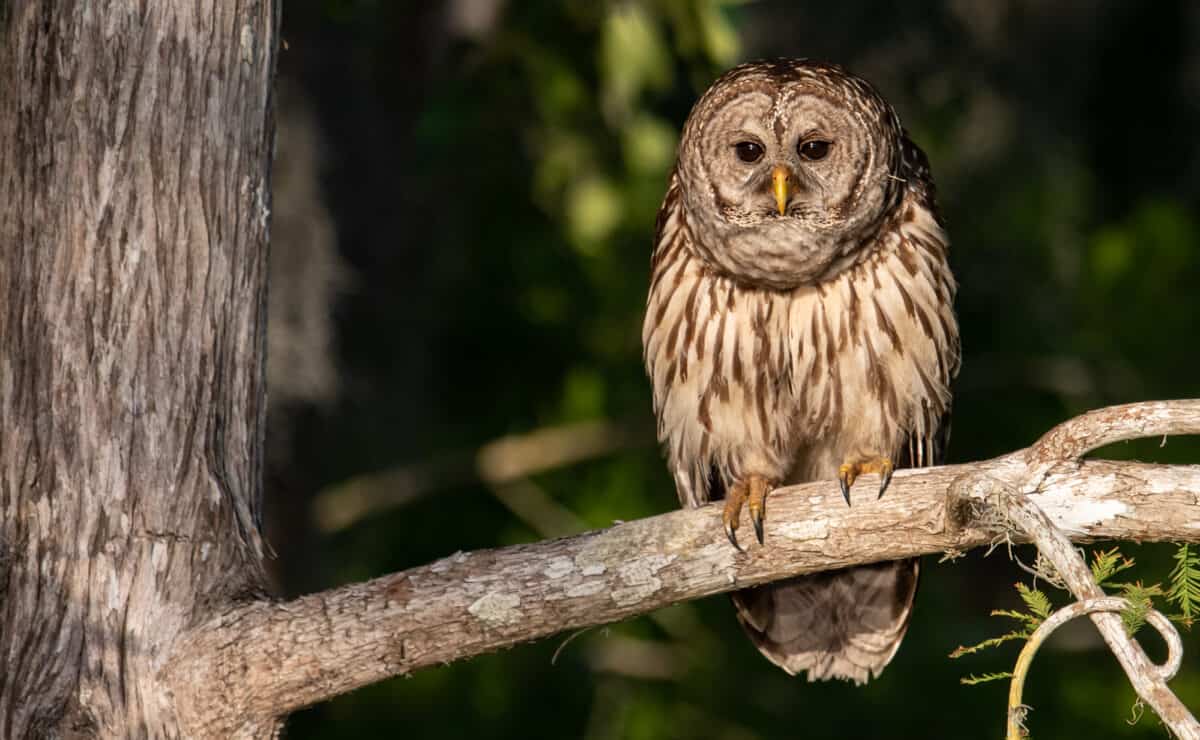
Unlike many predatory birds, owls cannot move their eyes within their sockets—their eyes are fixed in place by a bony structure called the sclerotic ring. This anatomical constraint necessitated an evolutionary solution: extraordinary neck flexibility. The ability to rotate their heads up to 270 degrees allows owls to effectively scan their surroundings without moving their bodies, maintaining perfect stillness while hunting. This adaptation provides a significant advantage when stalking prey, as even the slightest body movement might alert potential meals to their presence. What appears at first glance to be an unusual quirk is actually a finely-tuned survival mechanism that has evolved over millions of years to optimize the owl’s role as a stealth predator.
Unique Vascular Adaptations

One of the most fascinating aspects of the owl’s rotational ability lies in its specialized vascular system. In humans, turning our heads too far would stretch and potentially tear blood vessels, cutting off blood supply to the brain. Owls, however, possess blood vessels at the base of their necks that actually expand as they rotate their heads, ensuring uninterrupted blood flow to the brain regardless of head position. Additionally, these birds have specialized reservoirs of blood called anastomoses that collect blood from the arteries during extreme rotations. These reservoirs essentially act as backup pools, continuing to supply the brain with oxygen-rich blood even when the main vessels are partially compressed during rotation. This remarkable vascular architecture is unique among vertebrates and represents a critical adaptation that enables their extreme neck flexibility.
The Vertebral Structure Behind the Flexibility

An owl’s skeletal structure plays a crucial role in its rotational capabilities. While humans possess seven cervical vertebrae in our necks, owls have fourteen, providing significantly greater flexibility. The interconnections between these vertebrae are remarkably loose compared to other birds and mammals, creating a system of ball-and-socket joints that allows for extensive movement. Each vertebra can rotate independently of the others, creating a cumulative effect that results in the impressive 270-degree rotation. The spaces between vertebrae, called foramen, are also proportionally larger in owls, accommodating blood vessels and nerves during extreme rotations without pinching or compression. This specialized vertebral architecture represents millions of years of evolutionary refinement tailored specifically to the owl’s hunting requirements.
Species Variation in Rotational Ability

Not all owl species share the same degree of neck rotation. Research has documented significant variation across the 200+ owl species worldwide. The Great Horned Owl (Bubo virginianus) and Barred Owl (Strix varia) demonstrate some of the most impressive rotational capabilities, regularly achieving the full 270 degrees of movement. Other species, such as the Burrowing Owl (Athene cunicularia), which hunts primarily on the ground rather than from perches, show somewhat reduced neck flexibility. These variations correlate strongly with hunting strategies and habitat preferences. Forest-dwelling owls that hunt from stationary perches typically exhibit the greatest neck mobility, while species that employ more active hunting techniques may have traded some degree of neck flexibility for other adaptive advantages. This diversity highlights how evolutionary pressures shape physical traits according to ecological niches.
The Mechanics of Owl Head Rotation

The actual mechanics of how an owl rotates its head involve a complex interplay of muscles, tendons, and specialized skeletal features. When an owl begins to rotate its head, a series of small, controlled muscle contractions occur sequentially along the length of the neck. Unlike the relatively straightforward rotational movement in humans, owl head turning involves multiple simultaneous motions: rotation, lateral bending, and extension. The first few vertebrae near the skull contribute minimal rotation but provide crucial stabilization. The middle cervical vertebrae supply most of the rotational capacity, while the lower vertebrae connect to the relatively fixed torso. This distribution of movement prevents strain concentration at any single point in the neck. Additionally, specialized muscle groups called complexus muscles provide the necessary power for these extensive rotations while maintaining precise control throughout the movement.
Neurological Adaptations for Spatial Awareness
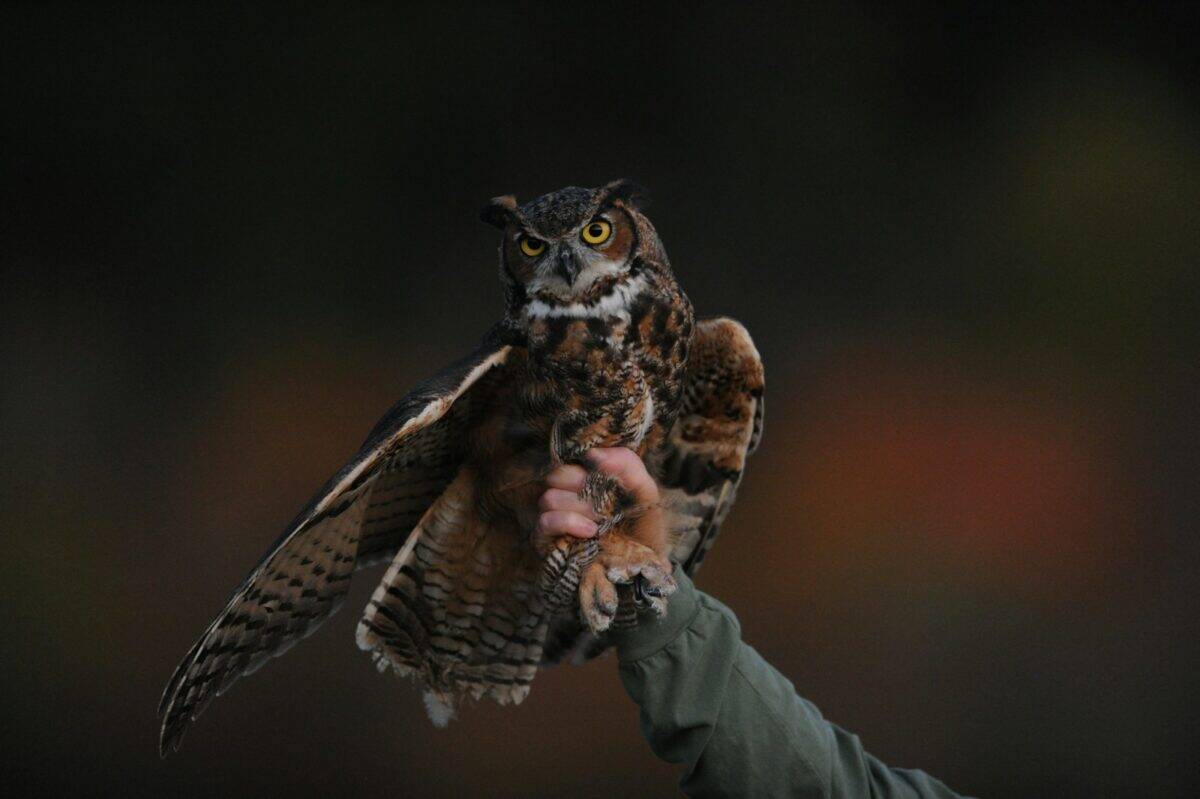
Beyond the physical adaptations that enable head rotation, owls possess remarkable neurological features that support spatial awareness during extreme head positions. Their brains contain specialized neural circuits that continuously process positional information, maintaining a coherent spatial map despite dramatic changes in head orientation. The vestibular system in owls is particularly sophisticated, with enlarged semicircular canals that detect rotational movements with exceptional precision. This enhanced system allows owls to maintain perfect visual stability even during rapid head rotations. Furthermore, their visual cortex contains specialized neurons that compensate for the changing orientation of visual input as the head rotates, ensuring that the owl’s perception of its environment remains consistent regardless of head position. These neurological adaptations work in concert with the physical features to create a seamlessly integrated system for extreme head mobility.
Fixed Eyes and Superior Vision

The owl’s need for extreme neck rotation stems directly from the immobility of their eyes. Unlike humans, who can move their eyes independently of head position, owls’ eyes are fixed within their skull by the sclerotic ring—a series of bones that form a tubular structure around each eye. This immobility is actually an advantage for vision, as it eliminates any possibility of eye movement that might compromise visual acuity. Owl eyes are proportionally enormous, taking up to 5% of their total body weight compared to human eyes at just 0.0003% of body weight. This exceptional size, combined with a high concentration of rod cells (responsible for night vision), allows owls to see up to 100 times better than humans in low-light conditions. The fixed position of these specialized eyes necessitates the extraordinary neck flexibility that has become the owl’s most recognizable feature.
The Role of Head Rotation in Hunting
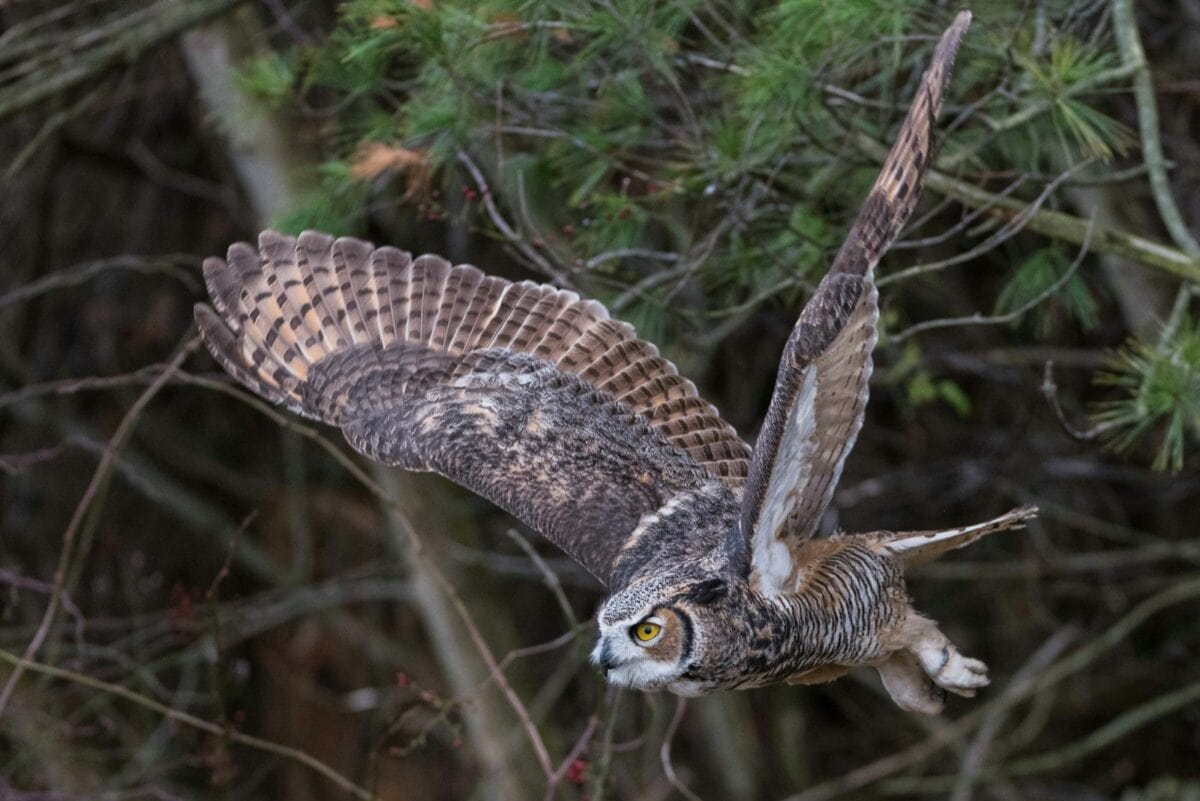
An owl’s hunting strategy relies heavily on its ability to rotate its head. When perched, an owl can remain perfectly still—not even shifting its body position—while scanning nearly 360 degrees of its surroundings by turning its head. This stillness is crucial, as prey animals are extremely sensitive to motion. Most owls hunt using primarily acoustic cues, with their famously asymmetrical ears precisely locating prey by triangulating sounds. Once a potential meal is detected, the owl’s head rotation allows it to visually confirm the target’s location without alerting the prey through body movement. During flight, this rotational ability enables owls to maintain visual contact with moving prey even when their flight path changes. The seamless integration of exceptional hearing, vision, and head mobility creates one of nature’s most effective hunting systems, allowing owls to capture prey in complete darkness with remarkable precision.
Scientific Research and Discoveries
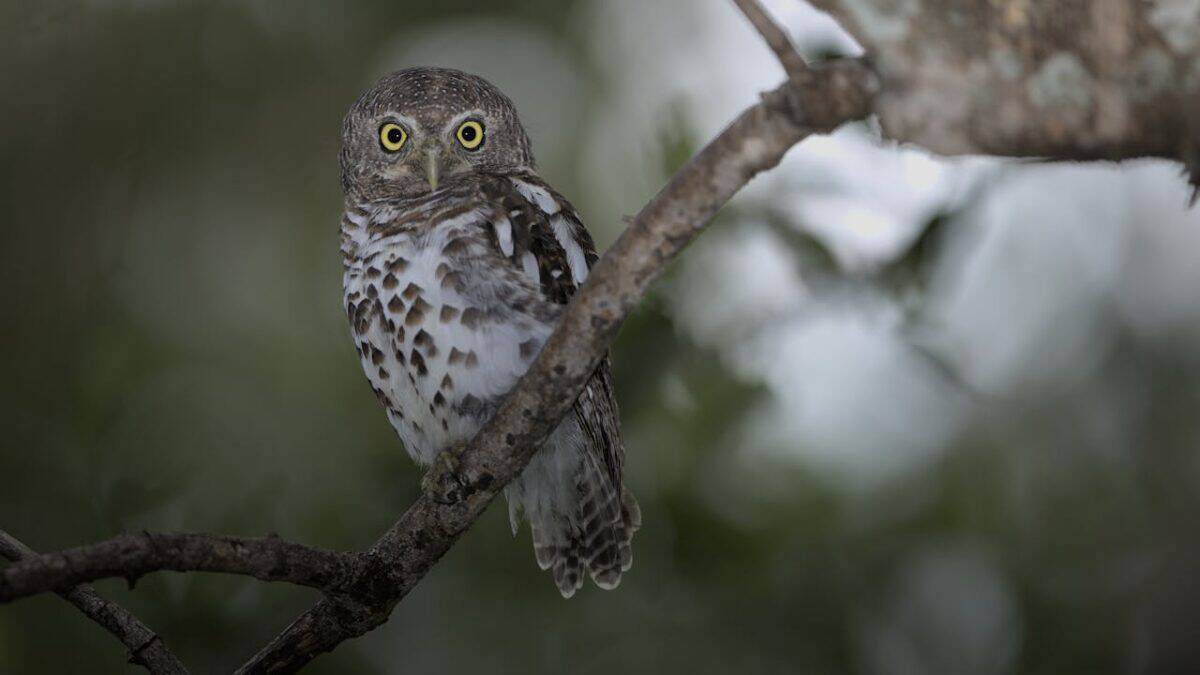
The extraordinary neck flexibility of owls has attracted significant scientific attention. In a groundbreaking 2013 study published in Science, researchers at Johns Hopkins University used advanced imaging techniques including angiography, CT scans, and MRIs to visualize the vascular system of owls during head rotation. This research, led by medical illustrator Fabian de Kok-Mercado and neurological surgeon Dr. Philippe Gailloud, revealed the previously unknown vascular adaptations that prevent stroke during extreme rotation. The study identified four key adaptations: vastly enlarged vessel diameter at the neck base, alternative blood supply routes, air-cushioned arterial wells that prevent vessel compression, and small connecting vessels that allow blood to flow between the jugular veins. These findings not only explained the owl’s remarkable ability but also provided insights potentially relevant to human medicine, particularly in understanding and preventing strokes caused by arterial tears.
Common Misconceptions About Owl Head Rotation
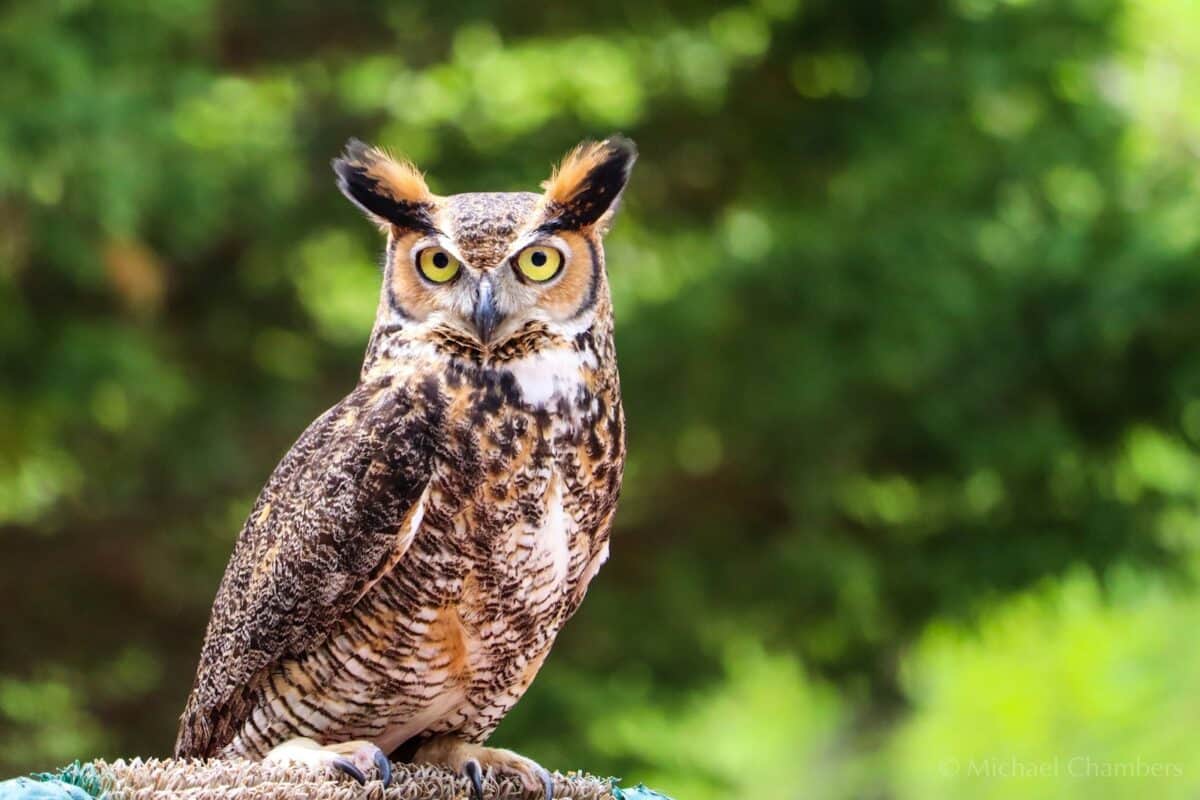
Despite widespread fascination with owl head rotation, several misconceptions persist in popular culture. Perhaps the most common is the belief that owls can rotate their heads a full 360 degrees, which is physiologically impossible even with their remarkable adaptations. The actual maximum rotation is approximately 270 degrees in either direction from the forward-facing position—still extraordinary but not complete. Another misconception involves the speed of rotation; while owls can turn their heads quite rapidly when necessary, they typically move deliberately to maintain visual stability and avoid disorientation. Additionally, some believe that owls rotate their heads primarily for dramatic effect or to appear frightening to predators. In reality, this behavior is simply a practical solution to the challenge of having fixed eyes. Understanding these distinctions helps appreciate the true nature of this evolutionary adaptation without mythologizing it beyond its already impressive reality.
Comparisons with Other Animals

While the owl’s rotational ability stands out as exceptional, it’s informative to compare it with other animals. Most birds can rotate their heads approximately 180 degrees, significantly more than humans but far less than owls. This additional flexibility in birds generally relates to their need to preen feathers across their entire bodies. Among mammals, the red-tailed sportive lemur of Madagascar demonstrates remarkable neck rotation of up to 180 degrees, an adaptation related to its nocturnal lifestyle and the need to scan for predators while maintaining a secure grip on tree branches. In the reptile world, certain snake species like the spotted bush snake can move their heads with significant freedom relative to their bodies, though this involves true spinal flexibility rather than just neck rotation. These comparisons highlight how the owl’s adaptation, while sharing some functional similarities with other species, represents a particularly extreme and specialized evolutionary solution.
Cultural Significance of Owl Head Rotation

The owl’s ability to rotate its head has captured human imagination for millennia, influencing cultural perceptions and symbolism across civilizations. In many ancient cultures, including Greek, Roman, and Celtic traditions, owls were associated with wisdom and foresight—attributes metaphorically connected to their ability to “see in all directions.” Conversely, in some cultures, this unusual ability contributed to superstitions about owls as harbingers of death or supernatural messengers. Medieval European folklore sometimes portrayed owl head rotation as evidence of demonic possession or otherworldly powers. In modern times, this distinctive feature has been prominently featured in literature, film, and visual arts, often symbolizing vigilance, awareness, or the ability to see beyond conventional perspectives. The cultural fascination with owl head rotation demonstrates how remarkable natural adaptations can transcend biological significance to become powerful symbols in human culture and consciousness.
Conclusion: A Masterpiece of Evolutionary Engineering
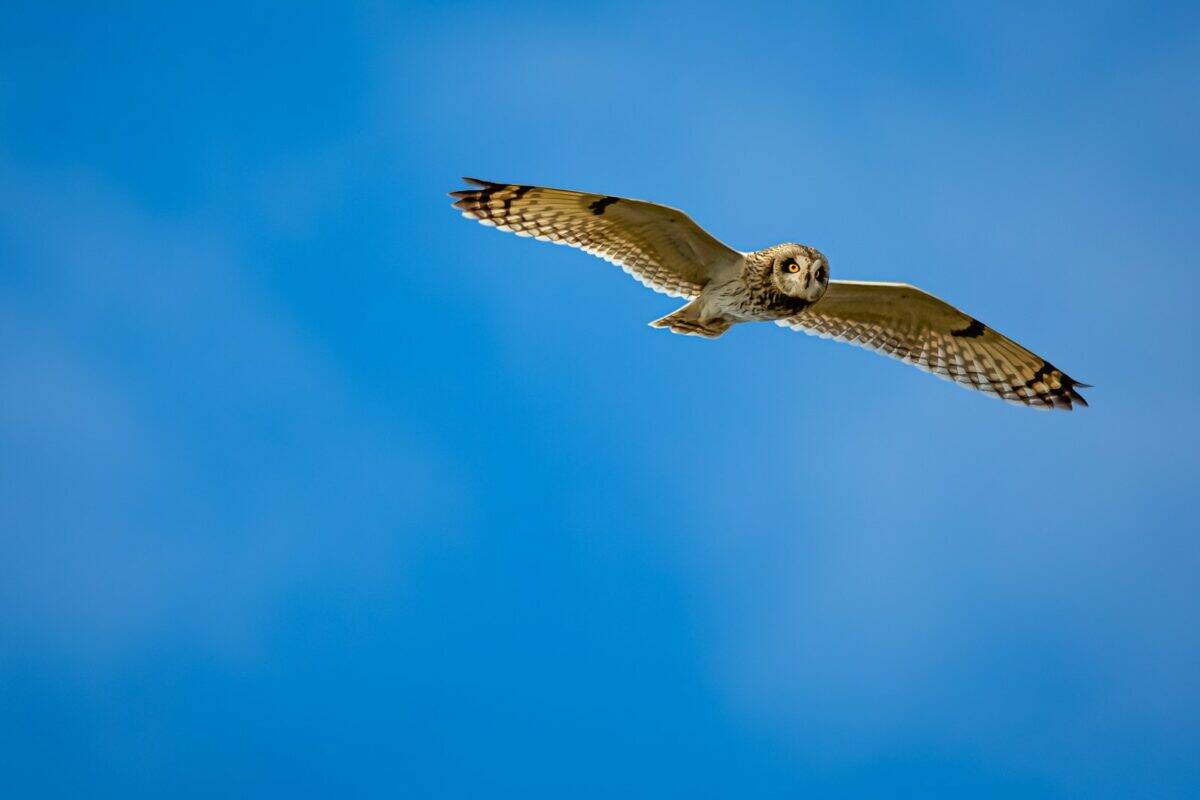
The owl’s ability to rotate its head up to 270 degrees represents one of nature’s most elegant solutions to a specific evolutionary challenge. What began as a compensation for fixed eyes has evolved into a sophisticated system that integrates skeletal flexibility, vascular adaptations, muscular specialization, and neurological innovations into a seamless whole. This remarkable capability not only enables owls to thrive as efficient nocturnal predators but also provides scientists with valuable insights into the relationship between form and function in vertebrate anatomy. As we continue to study these magnificent birds, we gain deeper appreciation for the intricate ways evolution shapes organisms to meet ecological challenges. The owl’s rotating head stands as a testament to the extraordinary diversity of adaptations that have emerged through natural selection, reminding us that nature’s engineering often surpasses human design in both elegance and efficiency.
- The Island Where Endangered Birds Are Making a Comeback - August 9, 2025
- Could the Ogallala Aquifer Run Dry in Our Lifetime? - August 8, 2025
- The Fish That Can Bite Through Bone - August 8, 2025

